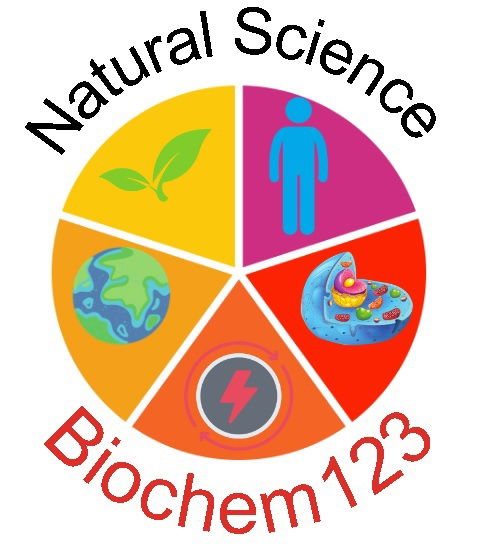Welcome to our Graphic Design Introduction for Biological Science course, where the worlds of science and visual communication unite!
In this unique program, we'll delve into the captivating realm of biology and equip you with the design skills to convey complex scientific concepts effectively. You'll learn how to transform intricate data, intricate cell structures, and genetic information into visually engaging materials.
Through hands-on projects and real-world applications, you'll master the art of creating informative and visually stunning graphics, from research posters to educational materials.
Join us in merging science with design, and be a catalyst for conveying the wonders of biological science to the world in an inspiring and accessible way.
Water, the elixir of life, is a seemingly simple yet remarkably complex molecule. Its chemical formula, H2O, belies the intricate arrangement of its atoms and the profound impact it has on our world. At its core, a water molecule consists of one oxygen atom bonded to two hydrogen atoms. This simple structure, however, gives rise to a unique set of properties that make water essential for life.
Water's polarity, stemming from the uneven distribution of electrons around the oxygen atom, allows it to dissolve a wide range of substances, earning it the title of "universal solvent." This ability enables water to transport nutrients, remove waste products, and facilitate chemical reactions within living organisms.Furthermore, water's hydrogen bonds, formed between the partially positive hydrogen atoms of one water molecule and the partially negative oxygen atom of another, create a cohesive network that contributes to water's high surface tension. This property allows water droplets to bead up, enabling insects to walk on water and facilitating the movement of water through plants.Water's remarkable heat capacity, its ability to absorb and release large amounts of heat without significant temperature changes, plays a crucial role in regulating Earth's climate. It acts as a thermal buffer, absorbing excess heat during the day and releasing it at night, moderating temperatures and preventing drastic fluctuations.
Water, the humble molecule of H2O, is not just a liquid that quenches our thirst; it is a substance that shapes our world, sustains life, and governs the intricate dance of nature.
DNA synthesis is a fundamental process in biology, essential for the replication of cells and the perpetuation of life. It is the process of creating new DNA molecules, either in the laboratory or within living cells. This intricate process involves the precise assembly of nucleotides, the building blocks of DNA, into a double helix structure. DNA synthesis occurs in two main forms: replication and repair.
1. Replication is the process of copying the entire DNA molecule, ensuring that each daughter cell inherits a complete set of genetic information.
2. Repair is the process of correcting damaged DNA, ensuring that the integrity of the genetic code is maintained. The process of DNA synthesis is catalyzed by enzymes, specialized proteins that facilitate biochemical reactions.
The key enzyme involved in DNA synthesis is DNA polymerase, which adds nucleotides to the growing DNA strand in a precise and error-free manner.DNA synthesis is a remarkable feat of molecular machinery, a testament to the elegance and complexity of life. It is a process that underpins the diversity and adaptability of living organisms, allowing them to evolve and thrive in an ever-changing world.
Meiosis, a type of cell division that produces haploid sex cells, plays a crucial role in generating genetic diversity among offspring. Unlike mitosis, which produces genetically identical daughter cells, meiosis introduces two key mechanisms that contribute to genetic variation: independent assortment and crossing over.
1. Independent assortment arises from the random alignment of homologous chromosomes during metaphase I of meiosis. This random alignment ensures that each daughter cell receives a unique combination of maternal and paternal chromosomes, leading to a variety of genetic combinations among the resulting gametes .
2. Crossing over, on the other hand, occurs during prophase I of meiosis when homologous chromosomes exchange segments of their DNA. This exchange of genetic material further reshuffles the genetic makeup of the gametes, creating even more genetic diversity.
The combination of independent assortment and crossing over during meiosis results in an explosion of genetic diversity among offspring, ensuring that each individual is genetically unique. This genetic diversity is essential for adaptation and evolution, allowing populations to respond to environmental changes and resist diseases. It is the foundation of the rich tapestry of life that we see on Earth today.
The brain is the most complex organ in the human body, responsible for everything from our thoughts and emotions to our movements and sensations. It is divided into three main parts: the cerebrum, cerebellum, and brainstem. The cerebrum is the largest part of the brain and is responsible for higher-order functions such as thinking, planning, and decision-making. It is divided into two hemispheres, the right and left, which are connected by a bundle of nerve fibers called the corpus callosum. The cerebellum is located at the back of the brain and is responsible for coordination and balance. It also plays a role in motor learning and memory. The brainstem is the lowest part of the brain and connects the brain to the spinal cord. It is responsible for essential functions such as breathing, heart rate, and digestion. In addition to these three main parts, the brain also contains a number of other important structures, including the hypothalamus, thalamus, hippocampus, and amygdala. These structures are responsible for a variety of functions, including regulating hormone production, processing sensory information, and forming memories.The brain is a complex and fascinating organ that is still not fully understood.
However, scientists are learning more about it all the time, and this knowledge is helping us to understand ourselves and the world around us better.

